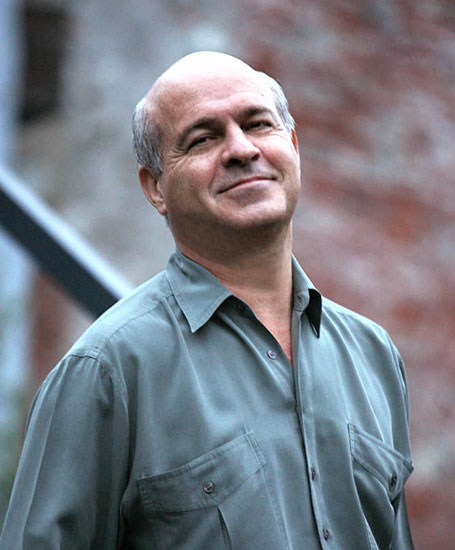Graf’s intelligent versatility bolsters new piano series
Rarely does an independent concert series achieve such success so quickly. The “5 @ 5” series (so called for its start time and admission price) at the DiMenna Center, curated by pianist Mirian Conti, is just past the midway point of its first year, which comprises eleven recitals by eleven artists.
The Uruguayan pianist Enrique Graf gave the series’ last performance until the fall, playing a solo recital that showed musicality and versatility. His program featured three pieces by composers from his own home city of Montevideo, and he preceded them with no introductory special pleading. The music needed none, feeling in no way overpowered by the two major staples that made up the second half.
The first of those two staples, Beethoven’s “Appassionata” sonata, would be enough to anchor a program on its own. Graf’s performance of this touchstone work was intelligent and well-planned, bringing clarity to the music even in the stormy passages that can so easily devolve into general noise.
His passagework in the opening movement was solid and his musical choices strong, creating a brooding, stormy interpretation that had less fire than some pianists would give it, but still built inexorably towards the final, lingering low F. He gave an elegant account of the second movement’s variations, and in the finale he overcame a little muddiness and was able to tie together the disparate ideas of the piece into a coherent and driving whole. Graf tended in this sonata, as elsewhere on his program, towards emotional reservation. The piece’s moniker notwithstanding, his choice of commitment over relentlessness was a refreshing turn on a familiar work.
Mussorgsky’s Pictures at an Exhibition is no throwaway, either, and as a closing item it put an exclamation point on the demanding recital. The programmatic elements were strong, as is essential: Graf’s playing was illustrative, creating vivid and varied scenes to contrast with the businesslike refrain of the “Promenade.” He found sober rumination in “Il vecchio castello,” lilting charm in “Tuileries,” gloom and emptiness in “Catacombae.” When the climactic “La grande porte de Kiev” came it was stately, achieving a sense of real finality without clobbering the listener.
A single encore, Mompou’s lovely, graceful, and glistening “Jeunes filles au jardin,” was a perfect way to come down from Mussorgsky’s energetic rush.
But it was the three Uruguayan pieces of the first half, all of them New York premieres, that stood out on this program—a fact that says as much about the pieces themselves as it does about Graf’s ability to interpret them.
The first, the three-movement Sonatina No. 2 (1953) by Eduardo Gilardoni, has a bit of Beethoven in its character, but is almost neoclassical in idiom. The second-movement Adagio, which begins with a quasi-chorale, showed complete calm in Graf’s playing that didn’t keep him from varying his dynamic expression. The closing Presto’s stormy arpeggios weren’t exactly fiery, but imbued with grim determination.
Héctor Tosar’s Danza Criolla (1941) is altogether brighter, a tripping, almost scurrying kind of dance. It is unusual among twentieth-century music for a host of reasons, not least of them its use of extended passages of straight counterpoint, to which Graf was able to bring unexpected humor.
The world premiere of the evening, Three Etudes by Florencia Di Concilio, started out less than promising. For one thing, Graf seemed less sure-handed in the first of these three than anywhere else on the program. The piece itself, moreover, struggled to amount to much more than a study, going through a series of maddening repetitions, culminating in a rather clumsy waltz.
The two following etudes, however, were a pleasure to hear. The second is a jazzy romance that seems to have a touch of Richard Rodgers to it—its close, lyrical melody occasionally breaks out, arching passionately into a higher register. The crooning melodic line, though, is set into a chromatic texture, constantly challenging the ear and threatening to pull the tune off course. The third was almost Lisztian in the crashing waves of its chords, which Graf dispatched with more of his deliberate muscle.
The 5 @ 5 series will resume on September 12 with a recital by Douglas Humphreys at 5 PM at the DiMenna Center for Classical Music. mirianconti.com/5–5-at-dimenna.html



